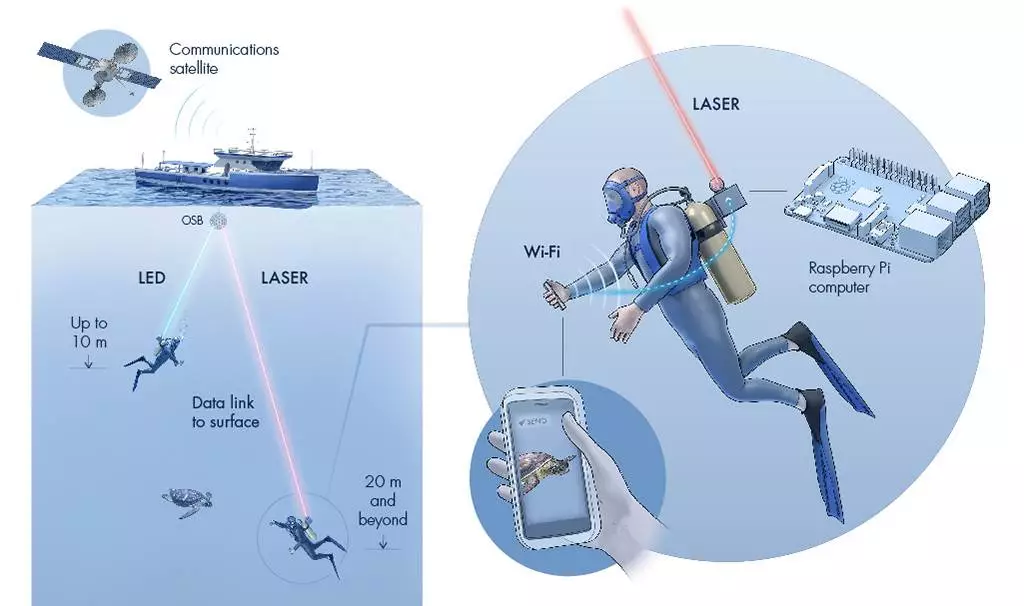Radio waves travel poorly through the water, which makes it difficult for divers or submersibles to wirelessly transmit information to the surface. Scientists are trying to change that, though, by developing an underwater version of Wi-Fi.
Back in 2018, we heard how researchers at Saudi Arabia's King Abdullah University of Science and Technology (KAUST) had used lasers to transmit HD video through water. Their experimental new system, known as Aqua-Fi, builds on that technology.
A user such as a scuba diver would start by sending data (such as photos or videos) from a smartphone contained in a watertight housing. That data would initially be transmitted in the form of radio waves, going just a few feet to a small device mounted on the diver's air tanks.
A microcomputer in that device would then convert the data into a series of ultra-rapid light pulses, each pulse representing either a 1 or a 0 in binary code. Those pulses would subsequently be emitted towards the surface, using either an integrated 520-nanometer laser or an array of green LEDs – the LEDs could send the data relatively short distances using little power, while the laser could send it farther but would use more power to do so.
Upon reaching the surface, the light pulses would be received by a photodetector on the underside of a ship, then converted back into the original photos or videos by a connected computer. From there, the files could be uploaded onto the internet via satellite.
So far, the Aqua-Fi system has been used to upload and download multimedia between two computers placed a few meters apart in still water. Before it can enter real-world use, though, it will have to be adapted to meet challenges such as the light-scattering effect of swiftly moving water – doing so may involve utilizing a spherical receiver, that could detect light pulses coming in from all directions.
"We have created a relatively cheap and flexible way to connect underwater environments to the global internet," says the lead scientist, Assoc. Prof. Basem Shihada. "We hope that one day, Aqua-Fi will be as widely used underwater as Wi-Fi is above water."
The research is described in a paper that was recently published in IEEE Communications Magazine.
Source: KAUST




